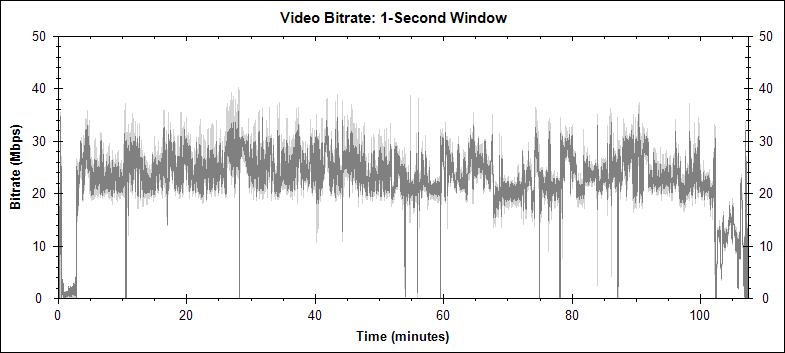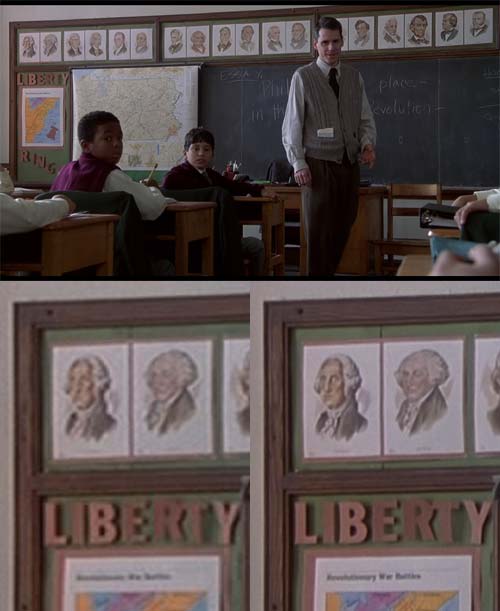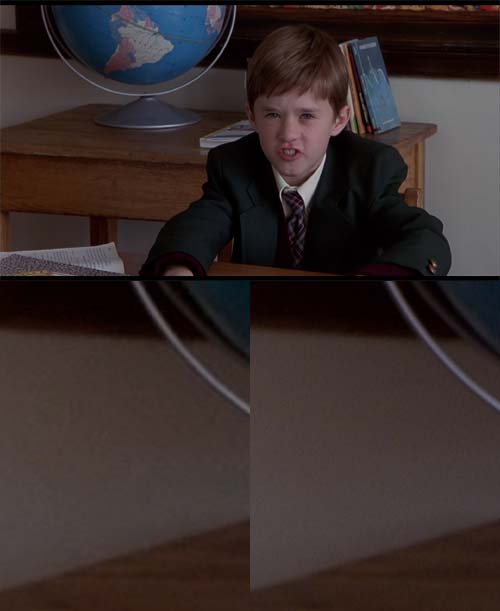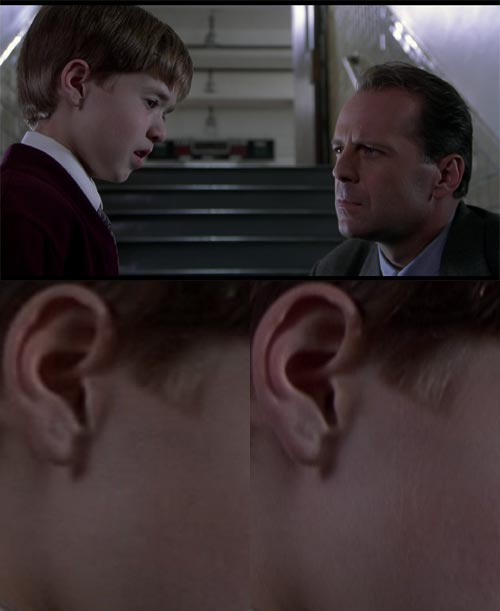 Picture:
Picture:  Sound:
Sound:  Extras:
Extras: 
Movie:  Picture:
Picture:  Sound:
Sound:  Extras:
Extras: 
Is it the sound? It's presented in multichannel PCM, and of course has its pitch accurate instead of being raised by four per cent (due to the speed-up of PAL DVDs). But while the sound in this movie is important, the Dolby Digital of the DVD is adequate (as, for that matter, is the 640kbps Dolby Digital on this disc, with which the PCM is backed up).
Could it be the special extras? Most of these are identical to those on the DVD, but you lose a seven minute featurette and a nine minute featurette, and instead receive a thirty seven minute featurette and a thirty nine minute featurette. These are interesting enough, but not worth the upgrade.
Instead, we get back to what Blu-ray is really all about: picture quality. This Blu-ray has over 30GB of content, much of which is the 1080p24, MPEG4 AVC video encode. The movie doesn't shout at you: 'Look how sharp I am!' Instead, it presents as an entirely artefact free, smoothly displayed image, with plenty of detail.
It is the absence of artefacts that makes this Blu-ray a delight to watch. To see the differences, go to www.hifi-writer.com/he/bdreviews/sixthsense.htm. There you will see, in comparison shots with the DVD, how much less noise there is with this Blu-ray compared to the DVD.
 (Australian rating); Region Free
(Australian rating); Region Free
The following video bitrate graph was generated by BDInfo 0.5.2:


This movie did not seem quite as razor sharp as some Blu-ray discs. That, I think, was to do with the cinematrography rather than the transfer. Nonetheless, the above shots are quite instructive. Look in the details at the portraits of what I presume are a couple of the US Founding Fathers. Sure, the Blu-ray is noticably sharper and more detailed. But don't look at the subjects of the portraits. Look instead at the 'white' area around them. On the Blu-ray this is clean, but with the DVD version there is a low level mottling which is characteristic of MPEG2 noise when there is a fairly high compression level.
Now look just beyond the left edge of the vertical wooden frame. On both shots if you look carefully enough you will see that to the left of this there is an white 'ghost' of the edge. This is pretty obvious on the DVD version, and very subtle on the Blu-ray version. But it is there on both. This comes from a process called 'edge enhancement' -- or simple detail sharpening.
In practice, you will not see the Blu-ray edge during your watching of the movie. Most people won't see the DVD edge either, nor the mottling in the mini-portraits. Nonetheless, the DVD artefacts hover at a low level of perception, just below the level of consciousness, but clearly enough to detract from the reality of the image.
The net result is that the Blu-ray just seems, well, more real.

In the above scene, there wasn't anything that really stood out as being revealed by Blu-ray, but obscured by DVD. Sure, Blu-ray was definitely sharper, and therefore more comfortable to watch. But see the large beige area in the detail (which covers the area to the bottom left of the world globe). On the Blu-ray version there is noise, as in grain. In the DVD version this is gathered into visible pattens, and blotches. Yuck.

But, of course, Blu-ray still offered more detail. Above, there is about as much clarity in the delineation of the bricks between the second and third windows (from the left) in the Blu-ray shot, as there is in the bricks to the left of the left-most window in the DVD shot.

Poor Haley Joel. Imagine watching this scene with a full high definition front projector on a large screen in your lounge room. If you're watching the DVD you will see this mottled kid with indistinct features, against a mottled background, with a touch of apparent ghosting around his shoulders. Now, wouldn't Blu-ray be nicer?

So, are DVD and Blu-ray pretty much the same? No, not by the hair on Haley Joel's cheek!